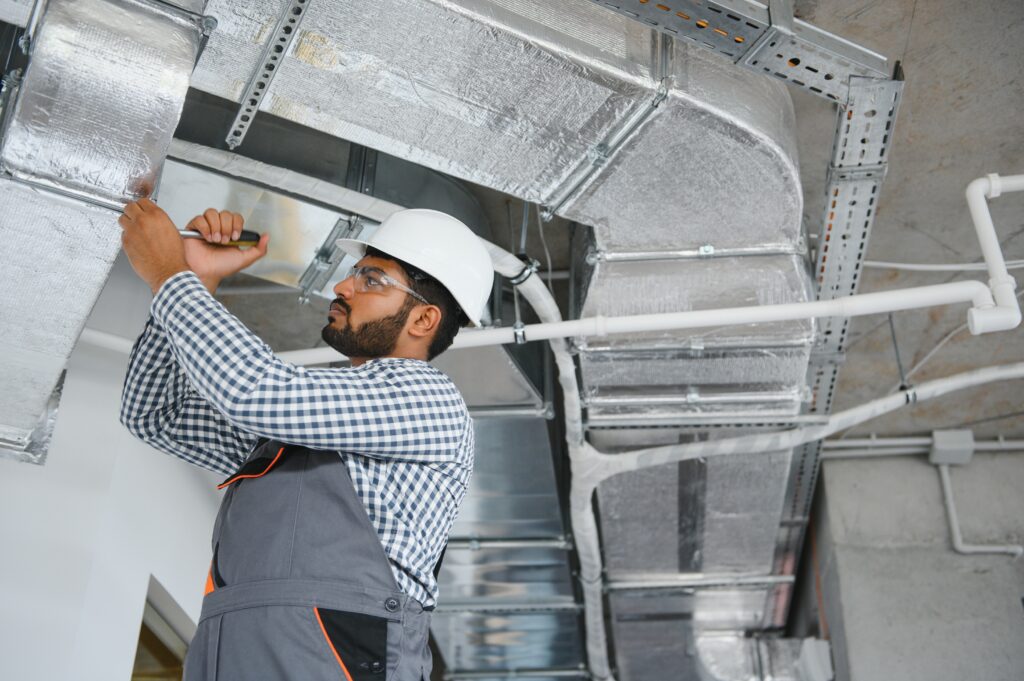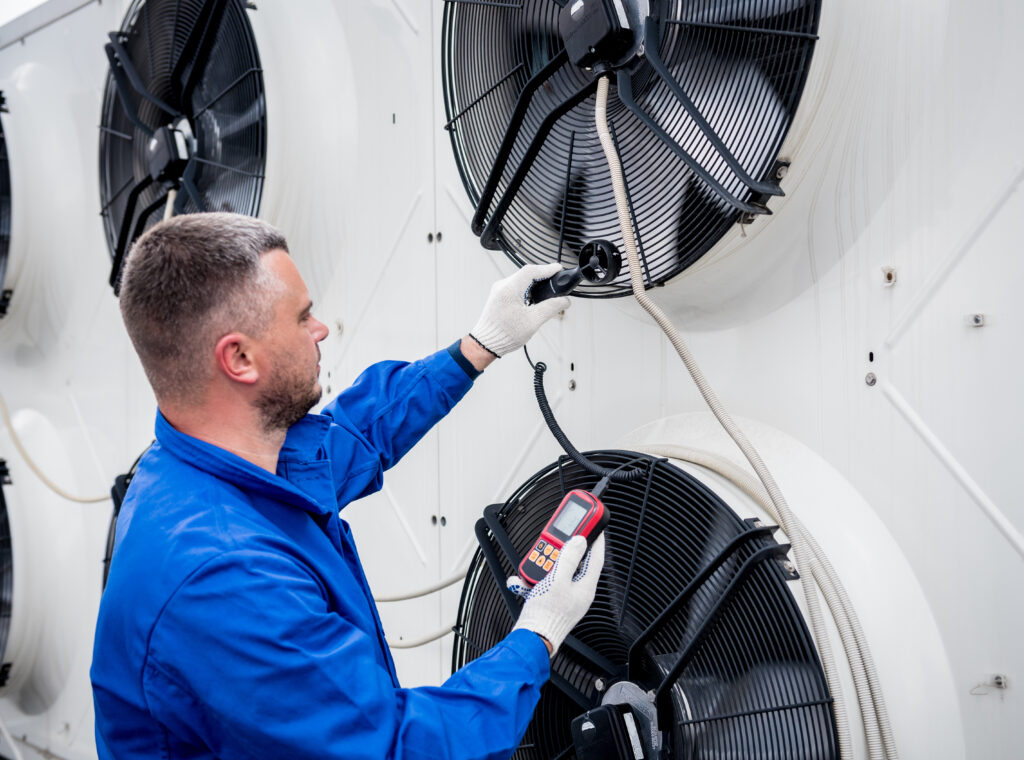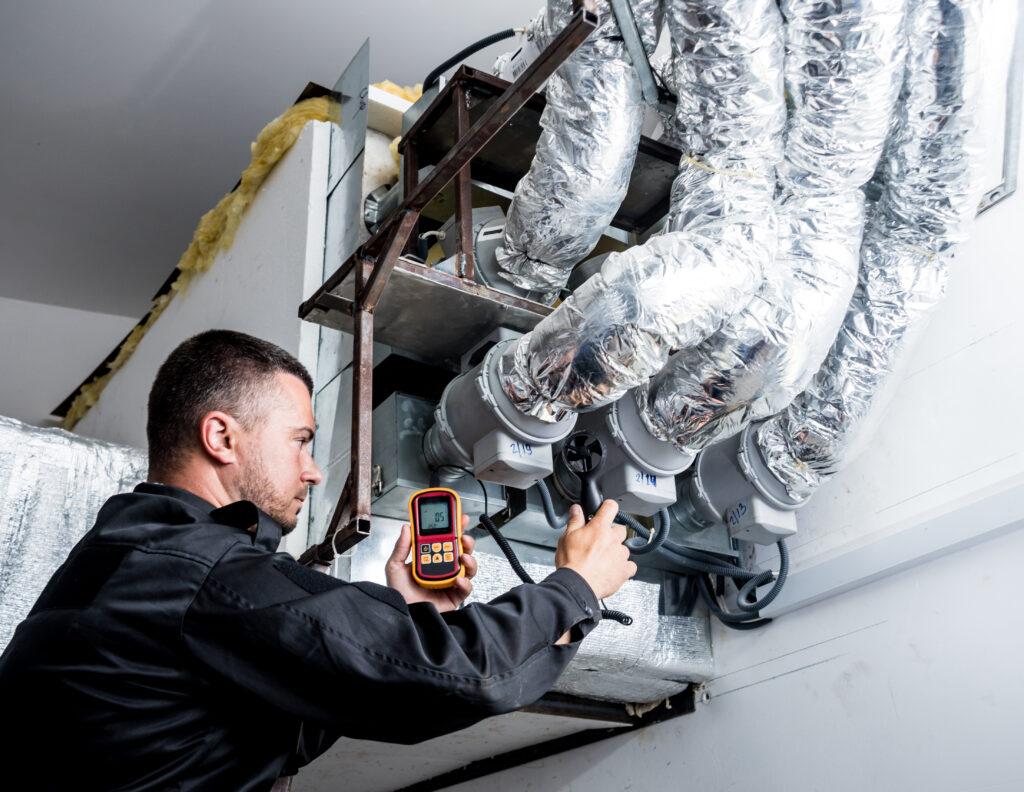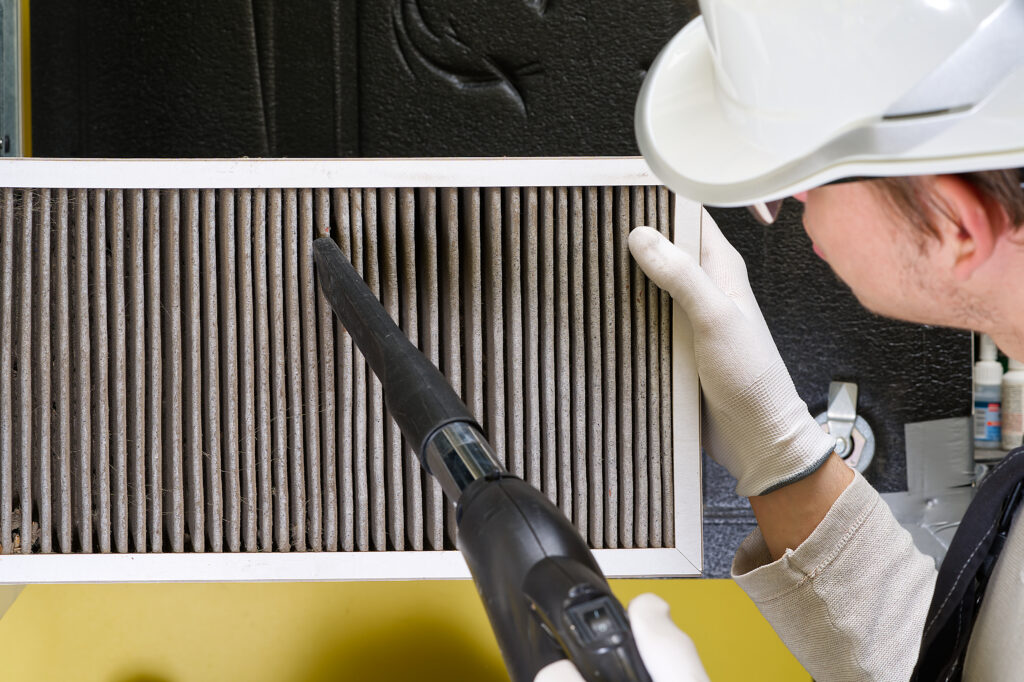HVAC Technician: What Do They Do & How To Become One

Table of Contents
- What Is HVACR?
- What Is an HVACR Technician?
- Other Ways to Refer to HVAC Technicians
- What Does an HVAC Technician Do? Job Description & Responsibilities
- Skills Required to Become an HVACR Technician
- How Much Does an HVAC Technician Make? (Yearly Salary)
- HVACR Pros & Cons
- How to Become an HVAC Technician
- So, is HVACR a Good Trade to Work in?
- FAQs about The Best HVAC Services to Offer in 2025
HVACR technicians are the people keeping buildings safe, comfortable, and functional year-round. From replacing broken AC units in the middle of a heatwave to inspecting ventilation systems in hospitals, their work touches nearly every part of modern life.
If you’re considering a career in HVACR — or hiring for your own service business — this guide explains what these pros do, how to become one, and why demand continues to rise in 2025.
In this article, we’ll break down:
- What HVACR means and how the trade works
- What an HVACR technician does (full job description and responsibilities)
- Other ways to refer to HVAC technicians
- Required skills, certifications, and licensing
- Pros and cons of the HVACR career
- Step-by-step guide to becoming an HVACR technician
- Yearly salary and what affects it
- FAQs about the HVACR career path
What Is HVACR?

HVACR stands for Heating, Ventilation, Air Conditioning, and Refrigeration. These systems regulate indoor environments to maintain safe temperatures, good air quality, and energy efficiency across homes, offices, factories, hospitals, and more.
HVACR includes:
- Heating: Furnaces, boilers, heat pumps
- Ventilation: Ductwork, exhaust fans, air filtration systems
- Air Conditioning: Central AC units, ductless mini-splits
- Refrigeration: Walk-in freezers, supermarket cooling systems, cold storage units
With climate change, energy efficiency demands, and an aging infrastructure, HVACR is one of the fastest-growing skilled trades in the United States.
What Is an HVACR Technician?

An HVACR technician installs, maintains, and repairs systems that heat, cool, and ventilate buildings. They may work in residential, commercial, or industrial settings and are often trained across multiple specialties.
According to the Bureau of Labor Statistics, more than 415,800 people currently work in this role, with 6% job growth expected through 2032 — faster than the national average.
Other Ways to Refer to HVAC Technicians
Depending on job focus and region, you might see these alternate titles:
- HVACR Mechanic
- HVAC Installer
- Refrigeration Technician
- Commercial HVAC Specialist
- Climate Control Technician
- Facilities Maintenance Technician (with HVACR focus)
- Service Technician (HVAC)

What Does an HVAC Technician Do? Job Description & Responsibilities
Depending on the time of year, the type of building, and the systems involved, HVAC technician’s work can range day-to-day. From hands-on installations to emergency troubleshooting calls. Here’s a breakdown of what HVAC techs typically handle on the job:
Install new HVAC systems in residential and commercial buildings
- Set up units, ductwork, and electrical components
- Install smart thermostats and programmable controls
- Ensure systems meet local codes and energy standards
Diagnose and fix existing HVAC systems (often using computerized tools)

- Use digital gauges, sensors, and mobile apps to identify issues
- Recharge or recover refrigerants safely (EPA compliant)
- Replace compressors, wiring, fans, or sensors as needed
Install electrical components and wiring
- Connect circuit boards, relays, and capacitors
- Read blueprints to ensure safe and efficient installation
Clearly explain HVAC problems and solutions with customers
- Break down technical concepts into everyday language
- Offer repair vs. replace recommendations
Inspect and clean ducts

- Check airflow, debris buildup, or leaks
- Recommend professional duct cleaning when needed
Follow government rules on proper handling and disposal of fluids and pressurized gasses
- HVAC technicians regularly work with refrigerants and pressurized gases that can pose environmental and safety hazards if not handled correctly. Compliance with EPA Section 608 regulations is federally mandated for anyone working with refrigerants.
- Additionally, OSHA safety protocols must be followed to reduce risks related to exposure, leaks, or improper storage. Local municipalities may have even stricter rules depending on the area.
- For more on EPA guidelines, see the official resource: EPA Section 608 Technician Certification
Skills Required to Become an HVACR Technician
Technical Skills
- Understand system components and functions
- Read wiring diagrams and schematics
- Use pressure gauges, airflow meters, and voltmeters
- Troubleshoot electrical and mechanical faults
Soft Skills
- Communicate effectively with non-technical clients
- Manage time across multiple jobs
- Stay adaptable in urgent, weather-dependent conditions
Physical Requirements
- Work in tight spaces (crawlspaces, attics, rooftops)
- Lift heavy tools or components
- Operate in hot or freezing environments for long hours
How Much Does an HVAC Technician Make? (Yearly Salary)
According to the BLS:
- Median pay: $51,390 per year
- Top 10% earn: Over $80,000
- Entry-level: $38,000 or less, depending on state and credentials
Factors That Affect Pay
- Location: Techs in Alaska, California, and Massachusetts earn above average
- Certifications: Advanced credentials (e.g., NATE, Energy Star) increase pay
- Union Membership: Often comes with better pay and benefits
- Experience Level: Master techs can double the income of entry-level workers
Want more detail? See our HVAC Technician Salary Guide 2025.
HVACR Pros & Cons
Pros
- High demand = steady work and job security
- Paid apprenticeships and on-the-job training available
- Opportunity to start your own HVAC business
- No four-year degree required
- Tangible, rewarding work that helps people daily
Cons
- Physically demanding and weather-exposed
- Emergency calls during weekends or holidays
- Licensing, tools, and certification costs
- Tight regulations and safety risks (e.g., pressurized gases)
How to Become an HVAC Technician
Step 1: Earn a high school diploma (or equivalent)
This is the minimum requirement to start your HVACR journey. While a general diploma or GED is enough, focusing on subjects like algebra, geometry, physics, and shop class can give you a real head start.
Classes in electronics and computer science are also helpful since many modern HVAC systems use smart technology and digital controls. If your school offers vocational training, enrolling in a pre-apprenticeship or tech program related to mechanical or electrical work can make your resume stand out early on.
Step 2: Continue your HVAC training through a technical college or apprenticeship
Options include:
- HVAC programs (6 months to 2 years)
- Associate degrees in HVAC technology
- Union or contractor apprenticeships (usually paid)
Step 3: Get licensed and/or certified
At a minimum, all HVACR techs must hold:
- EPA Section 608 Certification (required by federal law to handle refrigerants)
Additional licenses may be required based on your state or city. See our Guide to HVAC Licensing in the US for more.
Step 4: Earn additional certifications throughout your career in HVAC
These can boost pay and job prospects:
- NATE Certification
- HVAC Excellence
- Energy Star Qualified Technician
- OSHA 10/30 Safety Training
Step 5: Apply for an HVACR job
You can work in:
- Residential HVAC installation and repair
- Commercial maintenance
- Refrigeration systems (e.g., grocery stores)
- Property management or facilities tech roles
Want to go further? Read our How to Start a HVAC Business guide.

So, is HVACR a Good Trade to Work in?
Absolutely. With skilled trades in high demand and building systems growing more complex every year, HVACR offers long-term career security, solid pay, and a hands-on work environment that many find fulfilling.
And if you’re serious about staying organized and getting paid on time Invoice Fly is built for HVAC pros. You can generate professional estimates, send branded invoices, track payments, and follow up with clients — all in one place.
Our Invoice Maker helps HVAC professionals get paid faster and stay organized:
- Create and send invoices in seconds
- Track payments in real time
- Automate estimates and follow-ups
- Look professional with branded documents
FAQs about The Best HVAC Services to Offer in 2025
HVACR stands for Heating, Ventilation, Air Conditioning, and Refrigeration. It refers to systems that regulate indoor environments in homes and businesses.
A trained professional who installs, maintains, and repairs HVAC and refrigeration systems in residential, commercial, or industrial settings.
Trade school programs range from 6 months to 2 years. Apprenticeships take 3–5 years but usually include paid work.
You can prepare online, but most certifications (like EPA Section 608) require an in-person or proctored exam.
Licensing rules vary. Some states like Texas require statewide licensing. Others leave it to cities or counties. Always check local laws.
Start with a multimeter, leak detector, refrigerant gauges, screwdrivers, wire strippers, pipe wrench, flashlight or headlamp.
Installers focus on new setups. Technicians often handle repairs, diagnostics, and ongoing maintenance. Some do both.
